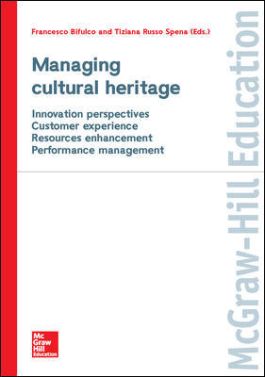Part I: Innovation perspectives and new technologies
1) Innovation ecosystem perspectives: featuring social and material landscape of innovation
2) The context of the Future Internet and cultural heritage
3) The DATABENC experience: a smart innovation habitat
PART II: Customer experience
4) Cultural service experiences and smart technologies
5) Proximity marketing and customer experience
6) Technology acceptance in museum experience: evidence from Italian setting
7) User generated content and social web knowledge in cultural heritage
PART III: Resource enhancement
8) An integrated approach to the valorisation strategy of cultural heritage
9) Tourism management in the context of World Heritage sites
10) Knowledge management in cultural heritage
11) Real estate management in the urban regeneration context: the role of meta?organizations
PART IV: Performance management
12) Performance measurement in cultural heritage: a balanced scorecard approach
13) Measuring smartness in historic centres
14) A business intelligence approach to cultural heritage
Cultural heritage represents an interdisciplinary topic in academic literature that spreads out through different research and disciplinary contexts. Business scholars have started to raise concerns about the contribution of management and innovation to the analysis of cultural heritage policies and to addressing issues related to the conservation, management and enhancement of heritage. The contributions point towards the co-existence and integration of cultural and business approaches and the recognition of the new challenges that arise from changes brought about by technologies and relationships between the different actors engaged in the production, distribution and consumption of heritage services. Books deepening the new complexity and multidimensionality of cultural heritage management are still rare; there is still a limited focus on incorporation of the key transformations that have emerged in the cultural heritage landscape. The purpose of this book is to propose an alternative conceptual framework for understanding cultural heritage management by considering and combining technological, social and business topics. This book defines roles and provides connections where new technologies can suggest routes and offer fresh insights by taking an integrating focus on cultural services, management approach, actors and organisations as well as resources. The book provides a knowledge resource to explore cultural heritage management in an integrated perspective. By combining different contributions in the field of heritage studies, the book raises issues of significant concern to cultural heritage scholars, managers, decision makers and highly skilled students alike.

